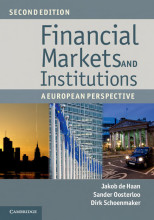What is AI: De Spiegeleire, Stephan, Matthijs Maas, and Tim Sweijs
28 important questions on What is AI: De Spiegeleire, Stephan, Matthijs Maas, and Tim Sweijs
Which survey notes common features in concise definitions of intelligence?
According to Stanford's definition, what is intelligence in the context of AI?
In which decade did the practical, applied field of AI significantly emerge?
- Higher grades + faster learning
- Never study anything twice
- 100% sure, 100% understanding
What marked a pivotal moment in AI research in 1956?
During the First AI Winter (1974-1980), what challenge emerged in AI research?
What characterized the Second AI Spring (1980-1987)?
Which event marked the beginning of the Third, Sustained AI Spring (1993-2011)?
What does AI consist of, according to the text?
What is the primary factor contributing to recent advancements in AI?
Which school of thought in AI is inspired by neuroscience and successful in deep learning?
What do evolutionists in AI aim to emulate?
Elaborate on Eliezer Yudkowsky's perspective regarding the greatest danger of AI, and discuss its implications for the field.
Analyze the etymology of the term "intelligence" and its historical evolution. How has the perception of intelligence changed over time?
Compare and contrast the 15th-century definition of intelligence with contemporary understandings. Highlight key shifts in the conceptualization of intelligence.
Evaluate the significance of Stanford's adopted definition of intelligence in the context of both natural and artificial intelligence. How does it address the challenges of defining intelligence?
Critically assess the survey conducted by Legg & Hutter, focusing on the common features identified in concise definitions of intelligence. Discuss the implications of these features for understanding AI.
Examine the roots of AI concepts in philosophy, logic, mathematics, and cognitive psychology spanning over 2000 years. How have these diverse fields influenced the development of AI?
Evaluate the impact of the Dartmouth Summer Project in 1956 on the field of AI. How did it shape collaboration and research directions in AI?
Analyze the factors contributing to the onset of the First AI Winter (1974-1980). How did challenges such as the combinatorial explosion of possibilities affect AI research during this period?
Assess the role of expert systems in the Second AI Spring (1980-1987). How did these rule-based programs contribute to the resurgence of AI, and what were their limitations?
Discuss the shifts in AI research during the Third, Sustained AI Spring (1993-2011). How did researchers move away from the pursuit of 'human-level' AI dreams, and what characterized this pragmatic turn?
Examine the complexity of developing human-like intelligence and the analogy drawn between reading and artificial intelligence. How do these intelligent functions collectively contribute to AI?
Evaluate the role of machine learning in recent advancements in AI. Discuss the impact of machine learning on the ongoing third phase of AI development.
Compare and contrast the five schools of thought in AI machine learning (Connectionists, Evolutionists, Bayesians, Symbolists, Analogisers). How do these approaches contribute to the quest for a "master algorithm"?
Analyze the transition from fully programmed systems to learning machines in the Cognitive Era. What implications does this shift have for the future of AI research and applications?
Critically assess the societal and operational concerns related to accountability in Artificial Narrow Intelligence (ANI) systems based on opaque machine learning capabilities. How can these concerns be addressed in the development and deployment of AI systems?
Machine Learning: five school of thoughts
AI problems van be grouped into classes related to
The question on the page originate from the summary of the following study material:
- A unique study and practice tool
- Never study anything twice again
- Get the grades you hope for
- 100% sure, 100% understanding































